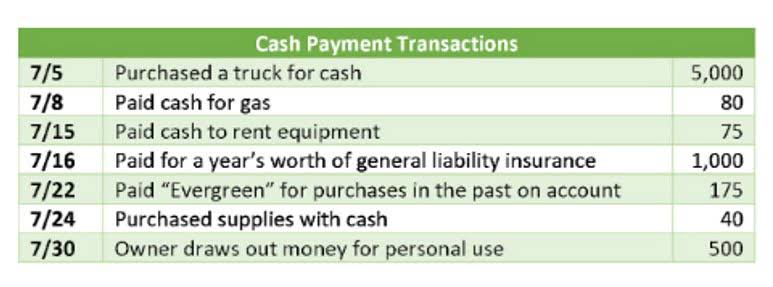What is Indirect Cost? Definition, Explanation, Types, and example 17 april 2023 – Posted in: Bookkeeping

In the realm of business studies, grasping the concept of indirect costs is essential. These costs, often referred to as overheads, are necessary for maintaining business operations but are not directly attributable to a specific product, service, or project. (As a reminder, a cost object is typically a product.) “Indirect costs” are those that cannot be directly traced to a single cost object. Because they cannot be traced directly to a specific cost object, indirect costs must instead be allocated to all of the products they are used to produce.
Which of the following headings is not part of the ‘cost of manufacturing’ calculation? (a)…

When a company accepts government funds, the funding agency may also have several strict mandates in place regarding the maximum indirect cost rate and which expenses qualify as indirect costs. Combined, direct and indirect costs represent all of the expenses incurred to run a company’s day-to-day business operations. The most common examples of direct costs include the following expenditures, assuming they are specific to a cost object, such as a product, service, department or project. Indirect costs are important to consider when estimating the total cost of a construction project. Accurately accounting for indirect costs helps to ensure that the project remains financially viable and profitable for the construction company. The approval of indirect cost rates are usually formalized by a rate agreement signed by the federal awarding agency and the county administrator, who is the authorized organizational representative (AOR) for the County.
- When a company accepts government funds, the funding agency may also have several strict mandates in place regarding the maximum indirect cost rate and which expenses qualify as indirect costs.
- These financial relationships support our content but do not dictate our recommendations.
- The indirect cost rate for federal proposals in support of off-campus activities is 26%.
- Without adequate F&A funding, research facilities may fall into disrepair, impacting the quality and safety of research.
- This varies across different institutions and how their revenue streams are configured.
- Accurate cost allocation is critical for organizations of all sizes to make informed decisions, and are a key part of management accounting.
- For example, it may be difficult to determine precisely how the activities of the county administrator benefit a specific project.
Challenges in Managing Direct and Indirect Costs
Accordingly, the unit cost of production would be measured using the newest or oldest inventory items. To make the matter even more indirect costs are also referred to as costs. complicated, direct and indirect expense categories can vary among different industries and even within the same business. Similarly, a company may not be able to easily assign a utility bill (e.g., electricity, water, waste collection) to a particular cost object (e.g., department) because the utilities were used by the whole building. These costs ensure the business runs smoothly but aren’t linked to any specific client project. Effective immediately, project directors are required to use the new rates for all proposals submitted for internal review.

A. Traditional Allocation
Direct costs are expenses that can be directly traced to a specific product, project, or service, while indirect costs are expenses that support multiple activities but cannot be directly linked to a single output. This comprehensive guide explores the definitions, examples, importance, and differences between direct and indirect costs, along with methods for managing and allocating these costs. One standard approach is the allocation method, where costs are distributed based on factors such as square footage or labor hours. Another technique is using activity-based costing, which allocates costs by identifying all activities essential to production and assigning costs accordingly.
Granting bodies often set specific limits on indirect cost allocations, which can affect the overall budget available for core project activities. An inability to accurately estimate and allocate indirect costs may result in funding shortfalls, jeopardizing project completion. Conversely, a well-managed indirect cost strategy ensures that projects are adequately funded while safeguarding essential administrative support. Understanding and justifying these https://www.bookstime.com/ costs in funding proposals can strengthen a project’s financial foundation and appeal to potential funders.
- They are often referred to as “overhead” costs and include things like rent, utilities, and insurance.
- Understanding indirect costs is crucial for small businesses because it helps in accurate budgeting, effective pricing strategies, and ensuring the sustainability of operations by preventing unexpected financial shortfalls.
- Because individual F&A costs cannot be assigned to projects, the College calculates a rate to determine the fair share of F&A costs each project should be charged and negotiates this rate with the government.
- Similarly, a company may not be able to easily assign a utility bill (e.g., electricity, water, waste collection) to a particular cost object (e.g., department) because the utilities were used by the whole building.
They often classify certain expenses as “direct costs” where federal rules for universities require similar costs to be categorized as F&A costs. Federal funding and foundation grants have different rules about what expenses they can cover. Regardless of the nuanced differences, the fact remains that both direct and F&A costs are necessary and real research expenses. Understanding the difference between direct costs and indirect costs is a critical aspect of proper accounting.
Indirect costs, also known as overhead costs, are expenses that are not directly tied to a specific product, service, or project. Examples of indirect costs include funding for building and infrastructure such as laboratories and equipment that may be used by multiple researchers, projects and students. Indirect costs for administration (the “A” in F&A) cover the management and execution of research, such compliance with federal, state and local requirements.
- Yes, indirect costs can be managed and controlled through budgeting, cost analysis, and implementing cost-saving measures, such as energy efficiency improvements or boosting administrative productivity.
- Activity-based costing (ABC) can also be used by linking indirect costs to the activities that generate them.
- This clear distinction allows companies to set strategic pricing and profit margins.
- In Lawrence, this impacts the long-term commitments of the KU Office of Research, including the Life Span Institute budget.
- Once NEH issues an award, it is not obligated to make adjustments due to increases in your organization’s indirect cost rate.
- Indirect costs are sometimes called Facilities and Administrative (F&A) costs or overhead costs.
Company
Non-profit organizations also face unique indirect costs, such as compliance with grant requirements, which might include verification processes or managing subawards. Overhead and operational expenses form a significant portion of indirect costs, encompassing all expenses necessary to keep a business running smoothly but not directly linked to a specific product or task. These costs include expenses like office rent, utilities, and insurance premiums, which are essential bookkeeping for maintaining the infrastructure that supports the core operations of any business. Additionally, expenses such as repairs and office equipment rental, along with payroll costs, contribute to the overall facilities and administrative costs. Proper management of these expenses enables businesses to operate efficiently and remain competitive.

- Tools like CostPerform are natively compatible with cost allocations like indirect and direct costs.
- In addition, certain types of construction projects may have higher or lower indirect cost rates depending on the specific requirements of the project.
- These rates are negotiated on a periodic basis with the federal government, and vary as a function of the institution’s investment in its research infrastructure and facilities.
- The facility produces several different products, including climbing ropes, carabiners, and climbing harnesses.
- When recovering/charging indirect costs, the indirect cost rate is applied to the amount actually expended, not the total amount budgeted.
In effect, universities invest in research in advance…when an investigator is awarded a federal grant the university “fronts” the costs of grants and then periodically draws money from the federal sponsor to reimburse these costs. As part of partnering with institutions to further scientific discoveries, the federal government reimburses part of these indirect costs of research. It’s important to know the difference between the types of costs because it gives you a greater understanding of your product or service, thus leading to more competitive pricing.
